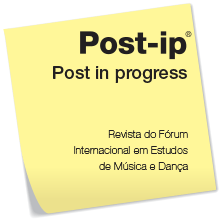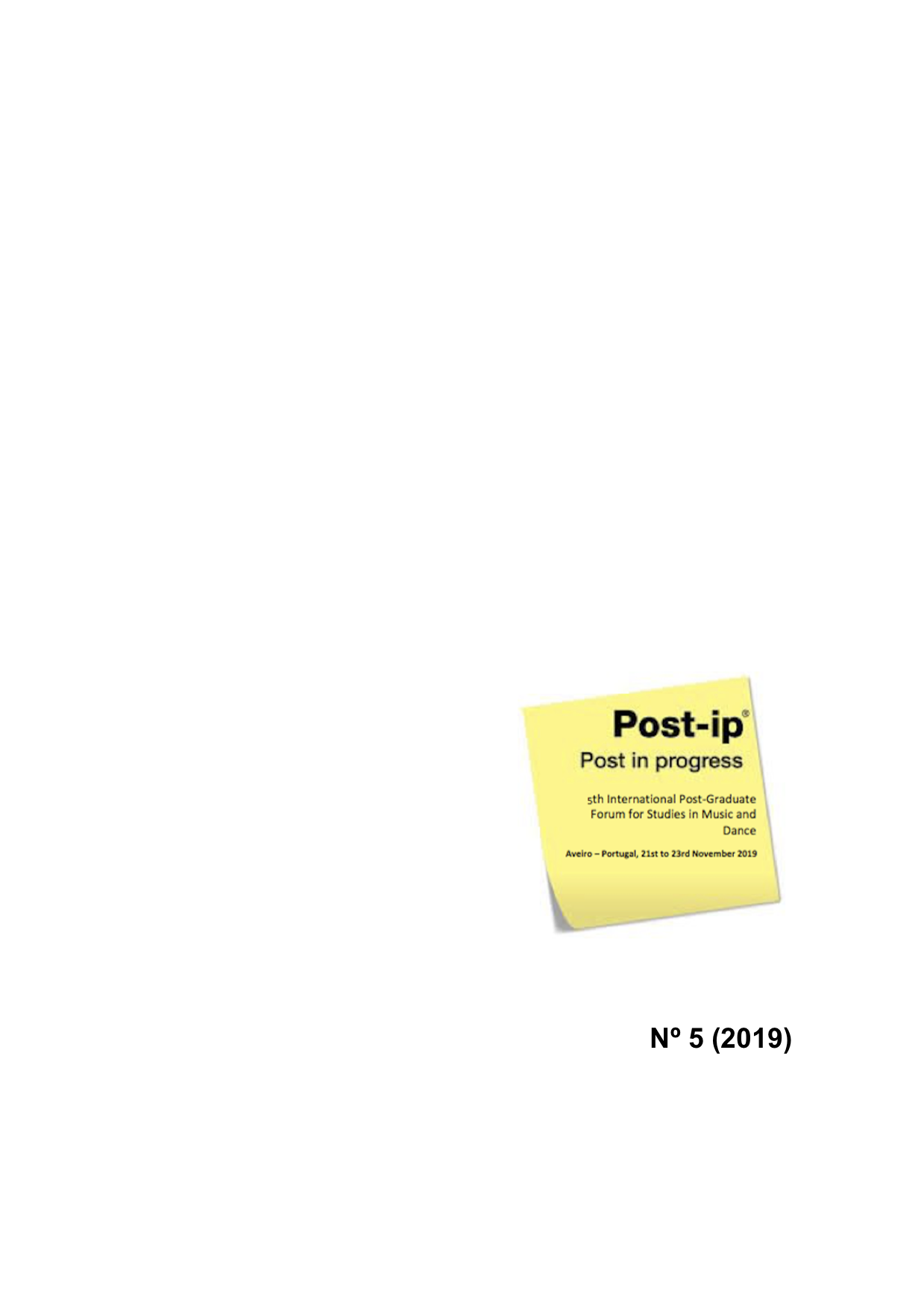PANDEIRO DE NÁILON: O estilo interpretativo de Bira Presidente
Resumo
A partir de 1972, quando o Bloco Carnavalesco Cacique de Ramos começava a promover rodas de samba em sua sede às quartas-feiras, um espaço fora do período carnavalesco surgiu para que os sambistas pudessem expor suas composições. Esse movimento, conhecido como “Pagode”, revelou notáveis músicos, compositores, assim como originou o Grupo Fundo de Quintal. O intuito principal da pesquisa é compreender como Bira Presidente – figura central desse movimento – executou o pandeiro de náilon no disco “De Pé No Chão” (RCA 1978). O álbum em questão apresenta extrema relevância pois foi a primeira vez que instrumentos como o repique de mão[1] e o banjo com afinação de cavaquinho foram gravados em um disco, e que atualmente são extremamente comuns no samba (Reis 2003, Silva 2013). Através de uma pesquisa documental videográfica, foi possível encontrar materiais onde se pode observar detalhes relativos à movimentação do instrumento, digitações e tipo de instrumento utilizado por Bira Presidente, o que seria bastante dificultoso, se não inviável, apenas com a audição dos fonogramas. Neste estudo de caso, foram feitas transcrições de trechos contrastantes da execução do pandeiro em três faixas a fim de compreender o idiomatismo presente no estilo interpretativo de Bira Presidente, evidenciando a riqueza de “levadas”[2]. Para isso, optei pela notação para pandeiro desenvolvida Stasi e Ferreira (2019), que representa com apenas duas linhas os timbres mais utilizados no pandeiro.
[1] Instrumento de percussão tradicionalmente executado com a mão esquerda percutindo o corpo metálico do instrumento e a mão direita a pele (para os destros). Os golpes na pele são feitos com a alternância do polegar e os demais dedos da mão, gerando sons médio e agudos.
[2] Padrão rítmico utilizado pelo instrumentista ao acompanhar uma determinada música.
Referências
Falcão, Adriana. “O Patuá Tamarindo”. 2019. Primo Selo. Novembro 02, 2019.https://www.primoselo.com.br/projeto-patua-tamarindo.
Ferreira, Gustavo Surian e Carlos Eduardo di Stasi. 2019. Pandeiro de Náilon: as técnicas de Carlos Café. Em 2º Congresso Brasileiro de Percussão – UFMG, 11-18. Minas Gerais: UFMG. Belo Horizonte: 2019. http://www.musica.ufmg.br/ppgmus/wp-content/uploads/2019/12/ANAIS-Congresso-de-Percussao_compressed.pdf.
Gianesella, Eduardo Flores. 2012. Percussão Orquestral Brasileira. 147-168. São Paulo: Editora Unesp.
Isso é Fundo de Quintal. Dirigido por Karla Sabah. 2004; Rio de Janeiro, RJ, Brasil: Indie Records, 2004. Filme.
Reis, Leonardo Abreu. 2003. “Memória Familiar No Cacique De Ramos”. Dissertação de mestrado, Centro de Ciências Humanas, Universidade do Rio de Janeiro.
Silva, Fábio Lopes. 2013. “Esquinas De Tantas Ruas: Os Pagodes Do Cacique De Ramos No Espaço Urbano Carioca”. Em Revista Fenix, (janeiro): 27-89. http://www.revistafenix.pro.br/PDF31/ARTIGO_11_SECAO_LIVRE_FABIO_LOPES_FENIX_JAN_JUL_2013.pdf.
Silva, Marcos Alcides da. 2019. Entrevistado por Gustavo Surian Ferreira. 14 de outubro.





